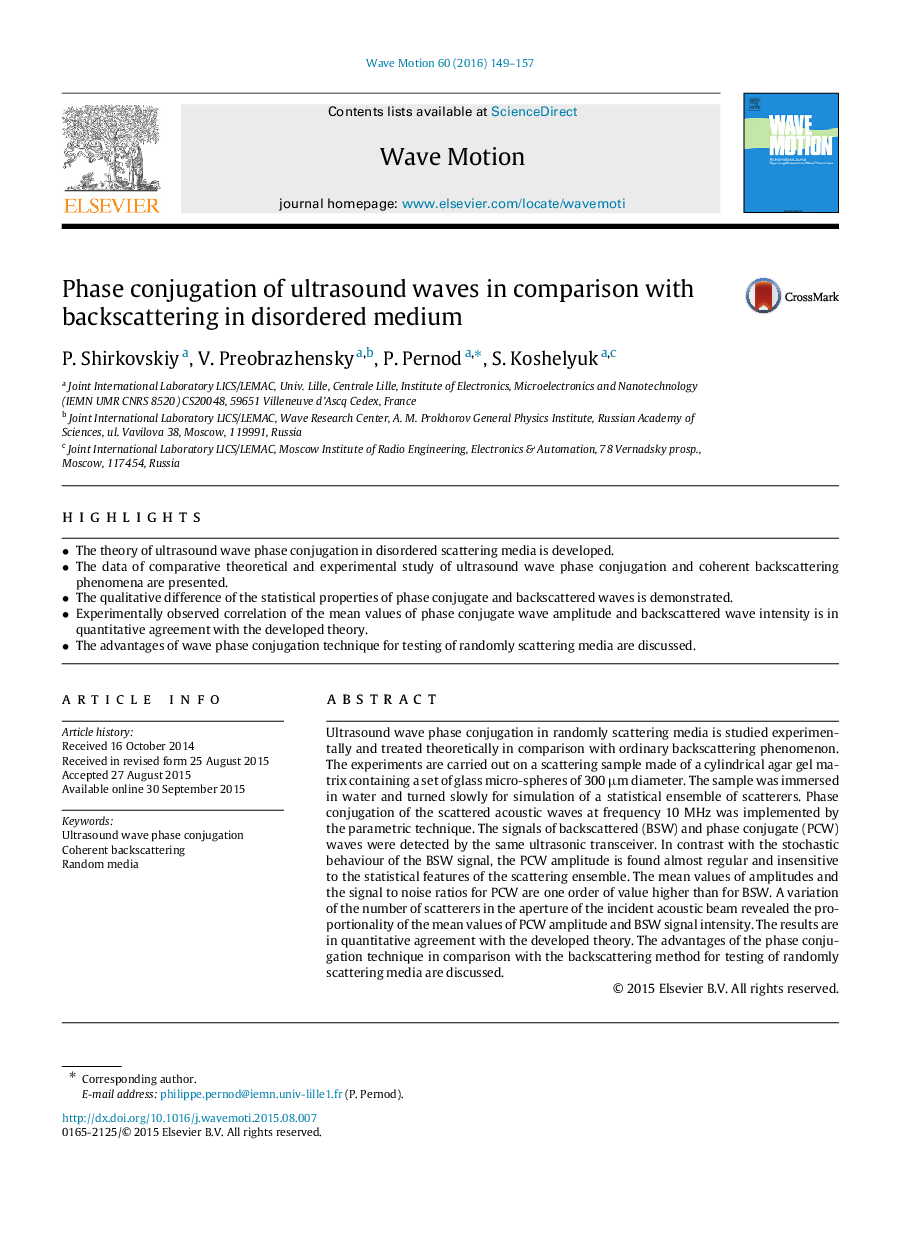| Article ID | Journal | Published Year | Pages | File Type |
|---|---|---|---|---|
| 1900078 | Wave Motion | 2016 | 9 Pages |
Abstract
Ultrasound wave phase conjugation in randomly scattering media is studied experimentally and treated theoretically in comparison with ordinary backscattering phenomenon. The experiments are carried out on a scattering sample made of a cylindrical agar gel matrix containing a set of glass micro-spheres of 300μm diameter. The sample was immersed in water and turned slowly for simulation of a statistical ensemble of scatterers. Phase conjugation of the scattered acoustic waves at frequency 10 MHz was implemented by the parametric technique. The signals of backscattered (BSW) and phase conjugate (PCW) waves were detected by the same ultrasonic transceiver. In contrast with the stochastic behaviour of the BSW signal, the PCW amplitude is found almost regular and insensitive to the statistical features of the scattering ensemble. The mean values of amplitudes and the signal to noise ratios for PCW are one order of value higher than for BSW. A variation of the number of scatterers in the aperture of the incident acoustic beam revealed the proportionality of the mean values of PCW amplitude and BSW signal intensity. The results are in quantitative agreement with the developed theory. The advantages of the phase conjugation technique in comparison with the backscattering method for testing of randomly scattering media are discussed.
Keywords
Related Topics
Physical Sciences and Engineering
Earth and Planetary Sciences
Geology
Authors
P. Shirkovskiy, V. Preobrazhensky, P. Pernod, S. Koshelyuk,
